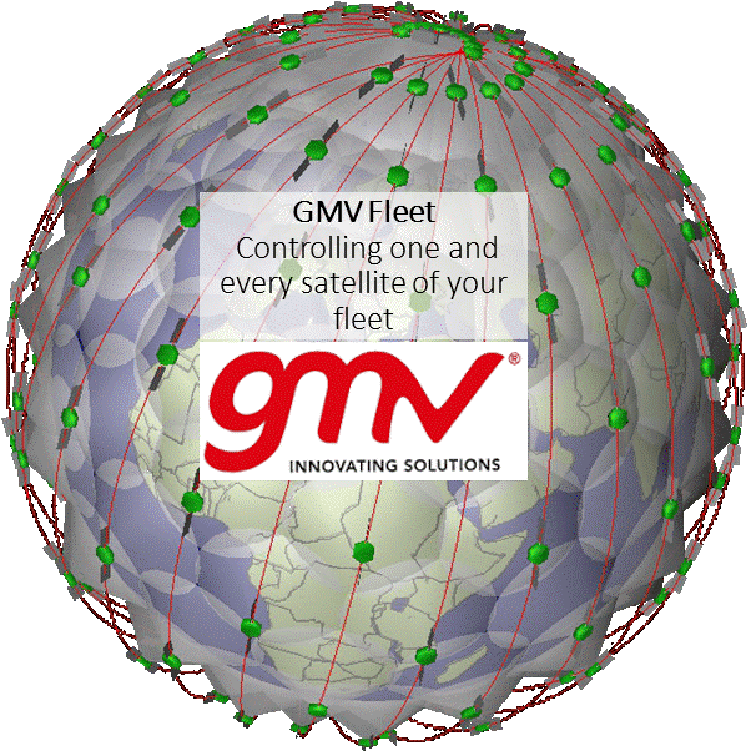-
StatusCompleted
-
Status date2020-01-24
-
Activity Code6B.036
The project objectives are focused in adapting and upgrading GMV products using state of the art techniques like virtualisation, cloud computing and software instantiations to enhance the design, distribution, operations and maintenance of large fleet monitor and control systems optimising resources and manning visualisation tools.
The system is to be based on GMV’s hifly real-time TM/TC kernel and related products, a worldwide leading satellite control system deployed in numerous telecommunication satellite operators.
The technical solution is based on the reengineering of GMV’s products migrated to a novel and generic web-based fleet management front-end.

The operations of massive (several hundreds) satellite fleet demands new approaches to satellite monitor and control:
- Automation: All what can be automated will have to be automated. The main challenge is to include the ability to automate any activity at different hierarchical layers. This requires rich and robust interfaces for automation engines.
- Scalability: This requires the reengineering of some GMV products to cope with a huge number of satellites: a) usability of application user interfaces; b) handling connections between fleet layer applications and satellite layer applications.
- Resource optimisation: The system has to be resilient to failures and optimise hardware and software resources dynamically.
- Operations team user interfaces: New concepts, methodologies to display dynamically what is relevant at a particular time considering different circumstances: LEOP, routine or contingency operations.
- Maintenance approach: New concepts for software maintenance and distribution and data storage will be applied to this project.
The nature of the technical enhancements derived from scalability represents a quantum leap in GMV’s satellite control centre technology and products: data display, automation, scheduling, archiving, cloud computing, software components interaction and maintenance.
The project covers the enhancement of GMV products portfolio providing a single access point for activity scheduling, events, alarms reporting and situational awareness by means of new graphical user interfaces and APIs.
The new scalable architecture will allow GMV to provide a generic solution applicable to small or large satellite fleet just applying common tailoring and configuration principles.
The following components will be developed or adapted within this project:
- Platform support in hifly for LEO operations.
- Enhancements in archiva for LEO operations.
- Fleet layer applications adapted for a massive fleet: flyplan, centralLog, oda and fleetDashboard.
- Fleet services for data provision to fleetDashboard and external applications.
- fleetDashboard as a single monitoring point with situational awareness capabilities.
- Concept of group of satellites, to be exploited specifically in fleetDashboard, but also in other components. The concept of group is vital for the usability of certain applications and for some activities, such as the edition of spacecraft databases.
- Virtualization techniques not only to host the control system, but also to be exploited for deployment and maintenance activities. This includes the concepts of satellite server template, as well as configuration and operational data in the cloud.
The proposed system manifests three well-defined layers as follows:
- The satellites layer (SATS) performs the monitoring and control of the individual satellites in the fleet.
- The fleet layer (FLEET) aggregates the information from the satellites and the ground, schedules single-satellite operations during the contacts and otherwise orchestrates the operations of the whole mission, both space and ground assets.
- Additionally, the vertical components provide cross-support (CROSS) to the satellites and fleet layers.
Project milestones:
- Kick-off Meeting
- Aim to review the proposed project planning and clarify any proposal outstanding issue.
- Preliminary Design Review
- Aim to review the requirements gather within the requirement analysis phase.
- Critical Design Review
- Aim to review the architectural and external interfaces proposed to fulfil the requirements approved in PDR.
- Factory Acceptance Review , pilot phase
- Aim to verify that the systems fulfil the stated requirements assigned to the pilot phase (10 satellites).
- Factory Acceptance Review, full constellation phase
- Final acceptance after verification of the fulfilment of all the project
- Final Review
- Aim to present the overview of the activities out during the project with conclusions and recommendations.
This activity has successfully concluded.
Current deployment is operational based on 50 satellites. We are testing 250S and we expect that no major changes need to be addressed for reaching 1000S.
Fleet tools have been significantly re-design to cope with 1000S situation.



